标签:img not 方法 load ehcache hang text .com with
目录
? 缓存是用于提升系统的性能,加速系统的访问,降低成本的一种技术。可以将一些高频、热点信息放入缓存中,避免直接从数据库中查询,如商品的页面信息这种经常被访问的数据。
为了统一缓存的开发规范、提高系统的扩展性和最小化开发成本等,J2EE 发布了 JSR-107 缓存规范。
Java Caching 定义了 5 个核心接口,分别是CachingProvider, CacheManager, Cache, Entry
和 Expiry。
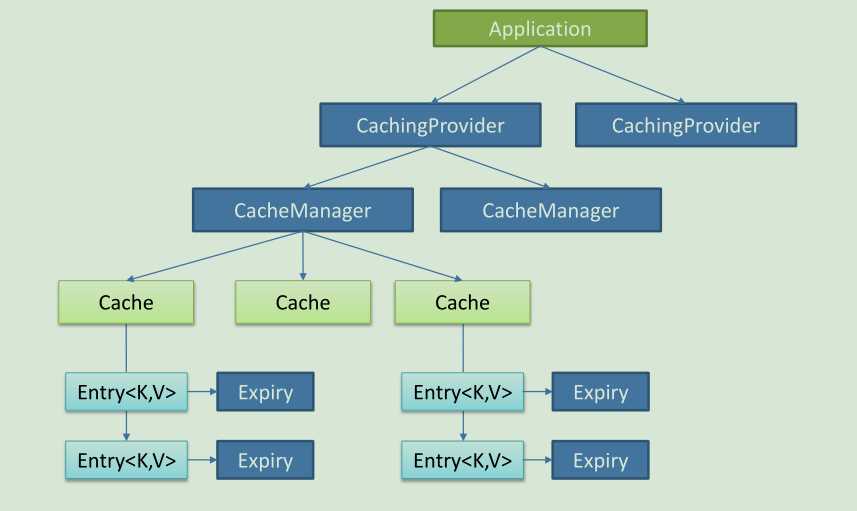
Spring 从 3.1 开始定义了 org.springframework.cache.Cache和 org.springframework.cache.CacheManager接口来统一不同的缓存技术并支持使用 JCache(JSR-107)注解简化我们开发。
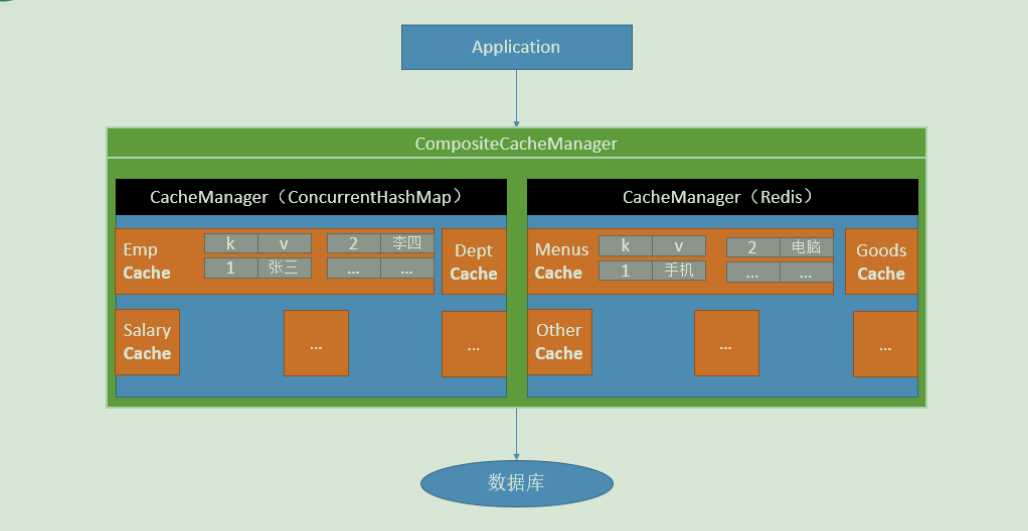
几个重要概念&注解:
| Cache | 缓存接口,定义缓存操作。实现有:RedisCache、EhCacheCache、ConcurrentMapCache等 |
|---|---|
| CacheManager | 缓存管理器,管理各种缓存(Cache)组件 |
| @Cacheable | 主要针对方法配置,能够根据方法的请求参数对其结果进行缓存 |
| @CacheEvict | 清空缓存 |
| @CachePut | 保证方法被调用,又希望结果被缓存。 |
| @EnableCaching | 开启基于注解的缓存 |
| keyGenerator | 缓存数据时key生成策略 |
| serialize | 缓存数据时value序列化策略 |

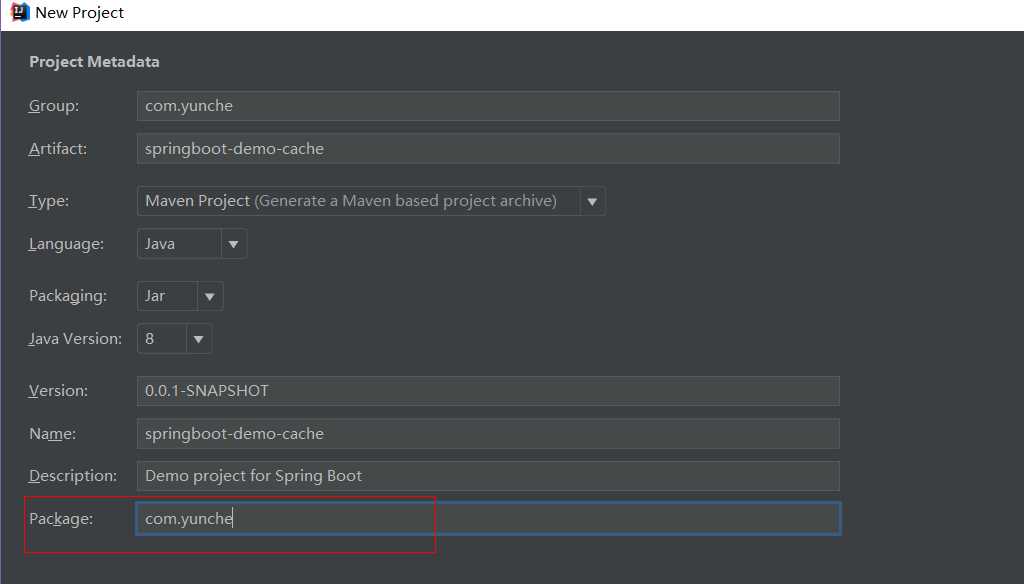
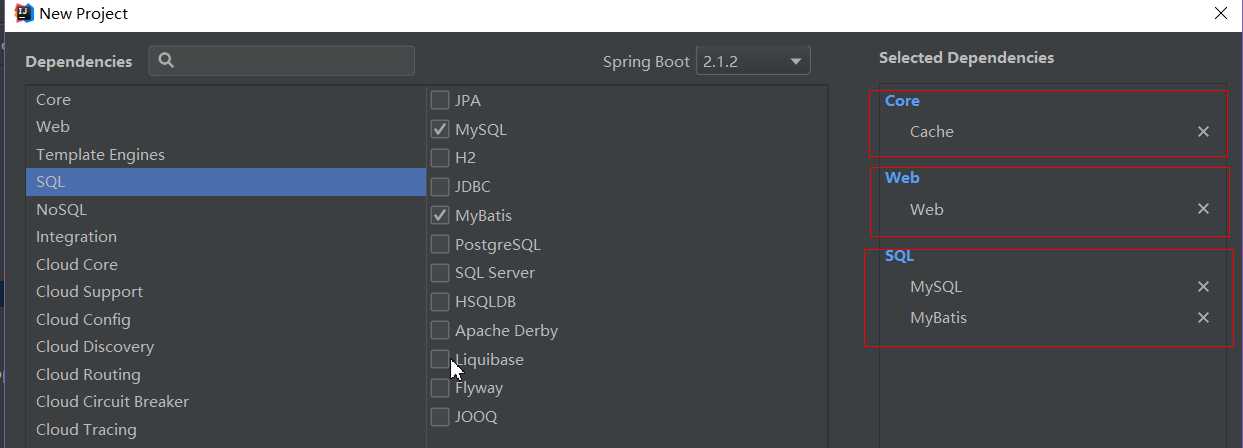
SQL 文件:
SET FOREIGN_KEY_CHECKS=0;
-- ----------------------------
-- Table structure for department
-- ----------------------------
DROP TABLE IF EXISTS `department`;
CREATE TABLE `department` (
`id` int(11) NOT NULL AUTO_INCREMENT,
`departmentName` varchar(255) DEFAULT NULL,
PRIMARY KEY (`id`)
) ENGINE=InnoDB DEFAULT CHARSET=utf8;
-- ----------------------------
-- Table structure for employee
-- ----------------------------
DROP TABLE IF EXISTS `employee`;
CREATE TABLE `employee` (
`id` int(11) NOT NULL AUTO_INCREMENT,
`lastName` varchar(255) DEFAULT NULL,
`email` varchar(255) DEFAULT NULL,
`gender` int(2) DEFAULT NULL,
`d_id` int(11) DEFAULT NULL,
PRIMARY KEY (`id`)
) ENGINE=InnoDB DEFAULT CHARSET=utf8;package com.yunche.bean;
public class Department {
private Integer id;
private String departmentName;
public Department() {
super();
// TODO Auto-generated constructor stub
}
public Department(Integer id, String departmentName) {
super();
this.id = id;
this.departmentName = departmentName;
}
public Integer getId() {
return id;
}
public void setId(Integer id) {
this.id = id;
}
public String getDepartmentName() {
return departmentName;
}
public void setDepartmentName(String departmentName) {
this.departmentName = departmentName;
}
@Override
public String toString() {
return "Department [id=" + id + ", departmentName=" + departmentName + "]";
}
}package com.yunche.bean;
public class Employee {
private Integer id;
private String lastName;
private String email;
private Integer gender; //性别 1 男 0 女
private Integer dId;
public Employee() {
super();
}
public Employee(Integer id, String lastName, String email, Integer gender, Integer dId) {
super();
this.id = id;
this.lastName = lastName;
this.email = email;
this.gender = gender;
this.dId = dId;
}
public Integer getId() {
return id;
}
public void setId(Integer id) {
this.id = id;
}
public String getLastName() {
return lastName;
}
public void setLastName(String lastName) {
this.lastName = lastName;
}
public String getEmail() {
return email;
}
public void setEmail(String email) {
this.email = email;
}
public Integer getGender() {
return gender;
}
public void setGender(Integer gender) {
this.gender = gender;
}
public Integer getdId() {
return dId;
}
public void setdId(Integer dId) {
this.dId = dId;
}
@Override
public String toString() {
return "Employee [id=" + id + ", lastName=" + lastName + ", email=" + email + ", gender=" + gender + ", dId="
+ dId + "]";
}
}application.properties:
spring.datasource.driver-class-name=com.mysql.cj.jdbc.Driver
spring.datasource.url=jdbc:mysql://localhost:3306/spring_cache?useSSL=false&serverTimezone=Asia/Shanghai
spring.datasource.username=root
spring.datasource.password=123456
#开启驼峰转换规则
mybatis.configuration.map-underscore-to-camel-case=truepackage com.yunche;
import org.mybatis.spring.annotation.MapperScan;
import org.springframework.boot.SpringApplication;
import org.springframework.boot.autoconfigure.SpringBootApplication;
@MapperScan("com.yunche.mapper")
@SpringBootApplication
public class SpringbootDemoCacheApplication {
public static void main(String[] args) {
SpringApplication.run(SpringbootDemoCacheApplication.class, args);
}
}package com.yunche.mapper;
import com.yunche.bean.Employee;
import org.apache.ibatis.annotations.*;
/**
* @ClassName: EmployeeMapper
* @Description:
* @author: yunche
* @date: 2019/02/01
*/
@Mapper
public interface EmployeeMapper {
@Select("SELECT * FROM employee WHERE id = #{id}")
Employee getEmpById(Integer id);
@Update("UPDATE employee set lastName=#{lastName},email=#{email},gender=#{gender},d_id=#{dId} WHERE id=#{id}")
void updateEmp(Employee employee);
@Delete("DELETE FROM employee WHERE id=#{id}")
void deleteEmp(Integer id);
@Insert("INSERT INTO employee(lastName,email,gender,d_id) VALUES(#{lastName},#{email},#{gender},#{d_id})")
void insertEmp(Employee employee);
}单元测试 Mapper:
package com.yunche;
import com.yunche.bean.Employee;
import com.yunche.mapper.EmployeeMapper;
import org.junit.Test;
import org.junit.runner.RunWith;
import org.springframework.beans.factory.annotation.Autowired;
import org.springframework.boot.test.context.SpringBootTest;
import org.springframework.test.context.junit4.SpringRunner;
@RunWith(SpringRunner.class)
@SpringBootTest
public class SpringbootDemoCacheApplicationTests {
@Autowired
EmployeeMapper employeeMapper;
@Test
public void contextLoads() {
}
@Test
public void testMapper() {
Employee employee = employeeMapper.getEmpById(1);
System.out.println(employee);
}
}package com.yunche.service;
import com.yunche.bean.Employee;
import com.yunche.mapper.EmployeeMapper;
import org.springframework.beans.factory.annotation.Autowired;
import org.springframework.stereotype.Service;
/**
* @ClassName: EmployeeService
* @Description:
* @author: yunche
* @date: 2019/02/01
*/
@Service
public class EmployeeService {
@Autowired
EmployeeMapper employeeMapper;
public Employee getEmp(Integer id){
System.out.println("查询"+id+"号员工");
Employee emp = employeeMapper.getEmpById(id);
return emp;
}
}package com.yunche.controller;
import com.yunche.bean.Employee;
import com.yunche.service.EmployeeService;
import org.springframework.beans.factory.annotation.Autowired;
import org.springframework.stereotype.Controller;
import org.springframework.web.bind.annotation.GetMapping;
import org.springframework.web.bind.annotation.PathVariable;
import org.springframework.web.bind.annotation.RestController;
/**
* @ClassName: EmployeeController
* @Description:
* @author: yunche
* @date: 2019/02/01
*/
@RestController
public class EmployeeController {
@Autowired
EmployeeService employeeService;
@GetMapping("/emp/{id}")
public Employee getEmployee(@PathVariable("id") Integer id) {
Employee employee = employeeService.getEmp(id);
return employee;
}
}测试:

EmployeeService:
/**
* 将方法的运行结果进行缓存,再次运行该方法时从缓存中返回结果
* CacheManager 管理多个 Cache 组件,Cache 组件进行缓存的 CRUD,每一个缓存组件都有唯一一个名字。
* 属性:
* cacheNames/value:指定缓存组件的名字
* key:缓存数据键值对的 key,默认是方法的参数的值
* keyGenerator:key 的生成器,可以自己指定 key 的生成器的组件 id 与 key 二选一
* cacheManager:指定缓存管理器 cacheResolver:缓存解析器,二者二选一
* condition/unless(否定条件):符合指定条件的情况下才缓存
*
* @param id
* @return
*/
@Cacheable(cacheNames = {"emp"}, condition = "#id % 2 == 1")
public Employee getEmp(Integer id){
System.out.println("查询"+id+"号员工");
Employee emp = employeeMapper.getEmpById(id);
return emp;
}Cache SpEL available metadata:
| 名字 | 位置 | 描述 | 示例 |
|---|---|---|---|
| methodName | root object | 当前被调用的方法名 | #root.methodName |
| method | root object | 当前被调用的方法 | #root.method.name |
| target | root object | 当前被调用的目标对象 | #root.target |
| targetClass | root object | 当前被调用的目标对象类 | #root.targetClass |
| args | root object | 当前被调用的方法的参数列表 | #root.args[0] |
| caches | root object | 当前方法调用使用的缓存列表(如@Cacheable(value={"cache1", "cache2"})),则有两个 cache | #root.caches[0].name |
| argument name | evaluation context | 方法参数的名字. 可以直接 #参数名 ,也可以使用 #p0 或#a0 的形式,0 代表参数的索引; | #iban 、 #a0 、 #p0 |
| result | evaluation context | 方法执行后的返回值(仅当方法执行之后的判断有效,如‘unless’,’cache put’的表达式 ’cache evict’的表达式 beforeInvocation=false) | #result |
EmployeeService:
/**
* 更新缓存,既调用方法 (更新数据库),又更新缓存
* 测试步骤:1、查询 1 号员工,将其纳入缓存
* 2、修改 1 号员工
* 3、再次查询 1 号员工,若结果是从缓存中查询数据,且数据为更新后的缓存则测试通过
* @param employee
* @return
*/
@CachePut(cacheNames = {"emp"}, key = "#result.id")
public Employee updateEmp(Employee employee) {
System.out.println("更新" + employee.getdId() + "号员工");
employeeMapper.updateEmp(employee);
return employee;
}EmployeeController:
@GetMapping("/emp")
public Employee updateEmployee(Employee employee) {
Employee emp = employeeService.updateEmp(employee);
return emp;
}测试:



EmployeeService:
/**
* 清空缓存
* beforeInvocation:默认为 false 表示在方法调用之后清空缓存,
* 若为 true,则表示在方法调用之前清空缓存
* @param id
*/
@CacheEvict(cacheNames = {"emp"}, beforeInvocation = true/*, key = "#id"*/)
public void deleteEmp(Integer id) {
System.out.println("删除" + id + "号员工");
//employeeMapper.deleteEmp(id); 只测试缓存的删除效果
}EmployeeController:
@GetMapping("/delemp")
public String deleteEmp(Integer id){
employeeService.deleteEmp(id);
return "success";
}Spring 的缓存默认使用的是 ConcurrentMapCacheManager 下的 ConcurrentMapCache,是将数据保存在 ConcurrentMap<Object, Object> 中。而在开发中是使用缓存中间件:redis、memcached、ehcache 等。
[root@izwz9d74k4cznxtxjeeur9z ~]# docker run -d -p 6379:6379 --name redis_cache docker.io/redis
44f9e905a7db0c0933f3d35ce65dd7041fd985d2da00895713d9765b20781011注意:要在阿里云服务器控制台添加安全规则,确认开放 6379 端口。
<dependency>
<groupId>org.springframework.boot</groupId>
<artifactId>spring-boot-starter-redis</artifactId>
<version>1.3.2.RELEASE</version>
</dependency>application.properties:
spring.redis.host=x.x.x.x #redis 服务器地址单元测试 redis 键值是字符串类型 :
/**
* 用于操作 key 和 value 都是字符串的键值
*/
@Autowired
StringRedisTemplate stringRedisTemplate;
/**
* 用于操作 key 和 value 都是对象的键值
*/
@Autowired
RedisTemplate redisTemplate;
/**
* 测试保存字符串
* Redis 常见的五大数据类型
* String(字符串)、List(列表)、Set(集合)、Hash(散列)、ZSet(有序集合)
* stringRedisTemplate.opsForValue()[String(字符串)]
* stringRedisTemplate.opsForList()[List(列表)]
* stringRedisTemplate.opsForSet()[Set(集合)]
* stringRedisTemplate.opsForHash()[Hash(散列)]
* stringRedisTemplate.opsForZSet()[ZSet(有序集合)]
*/
@Test
public void testStringRedis() {
// 追加一个字符串类型的 value
stringRedisTemplate.opsForValue().append("msg", "hello");
//读取一个字符串类型
String value = stringRedisTemplate.opsForValue().get("msg");
System.out.println(value);
}单元测试 redis 存储对象:
package com.yunche.config;
import com.yunche.bean.Employee;
import org.springframework.boot.autoconfigure.condition.ConditionalOnMissingBean;
import org.springframework.context.annotation.Bean;
import org.springframework.context.annotation.Configuration;
import org.springframework.data.redis.connection.RedisConnectionFactory;
import org.springframework.data.redis.core.RedisTemplate;
import org.springframework.data.redis.serializer.Jackson2JsonRedisSerializer;
import java.net.UnknownHostException;
/**
* @ClassName: MyRedisConfig
* @Description:
* @author: yunche
* @date: 2019/02/02
*/
@Configuration
public class MyRedisConfig {
@Bean
public RedisTemplate<Object, Employee> empRedisTemplate(
RedisConnectionFactory redisConnectionFactory) throws UnknownHostException {
RedisTemplate<Object, Employee> template = new RedisTemplate<>();
template.setConnectionFactory(redisConnectionFactory);
//改变默认的序列化器
template.setDefaultSerializer(new Jackson2JsonRedisSerializer(Employee.class));
return template;
}
}@Autowired
RedisTemplate<Object, Employee> empRedisTemplate;
/**
* 测试保存对象
* 1、使对象的类实现 Serializable 接口,表示该类的对象可以序列化
* 2、使用自定义 RedisTemplate 改变默认的序列化机制(jdk)方便观察
*/
@Test
public void testObjectRedis() {
Employee employee = employeeMapper.getEmpById(1);
empRedisTemplate.opsForValue().set("emp-01", employee);
}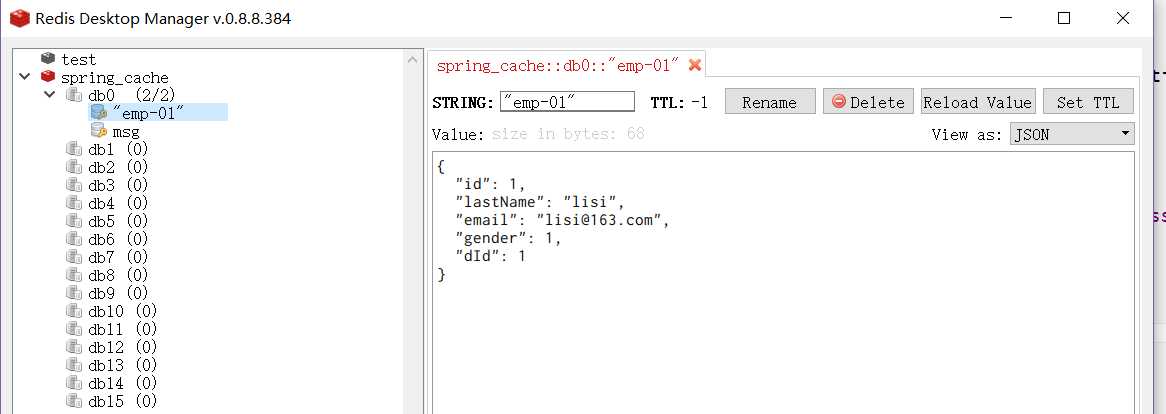
此时使用的缓存管理器为 RedisCacheManager,为了使缓存到 Redis 里面的数据达到如上图所示的效果,我们就需要自定义 RedisCacheManager 改变 RedisTemplate 的默认序列化机制(jdk)。
MyRedisConfig:
// Spring Boot 1.x
// @Bean
// public RedisCacheManager employeeCacheManager(RedisTemplate<Object, Employee> empRedisTemplate){
// RedisCacheManager cacheManager = new RedisCacheManager(empRedisTemplate);
// //key 多了一个前缀
//
// //使用前缀,默认会将 CacheName 作为 key 的前缀
// cacheManager.setUsePrefix(true);
//
// return cacheManager;
// }
/**
* Spring Boot 2.x 以后 RedisCacheManager 构造函数不再接受 RedisTemplate 参数
* @param factory
* @return
*/
@Bean
public RedisCacheManager empRedisCacheManager(RedisConnectionFactory factory) {
RedisCacheConfiguration config = RedisCacheConfiguration.defaultCacheConfig()
.serializeValuesWith(RedisSerializationContext.SerializationPair.fromSerializer(new Jackson2JsonRedisSerializer(Employee.class))); //使用 Jackson2JsonRedisSerialize
RedisCacheManager redisCacheManager = RedisCacheManager.builder(factory)
.cacheDefaults(config)
.transactionAware()
.build();
return redisCacheManager;
}访问 http://localhost:8080/emp/1,Redis 缓存结果如下:

尚硅谷.Spring Boot 高级篇
标签:img not 方法 load ehcache hang text .com with
原文地址:https://www.cnblogs.com/yunche/p/10349214.html